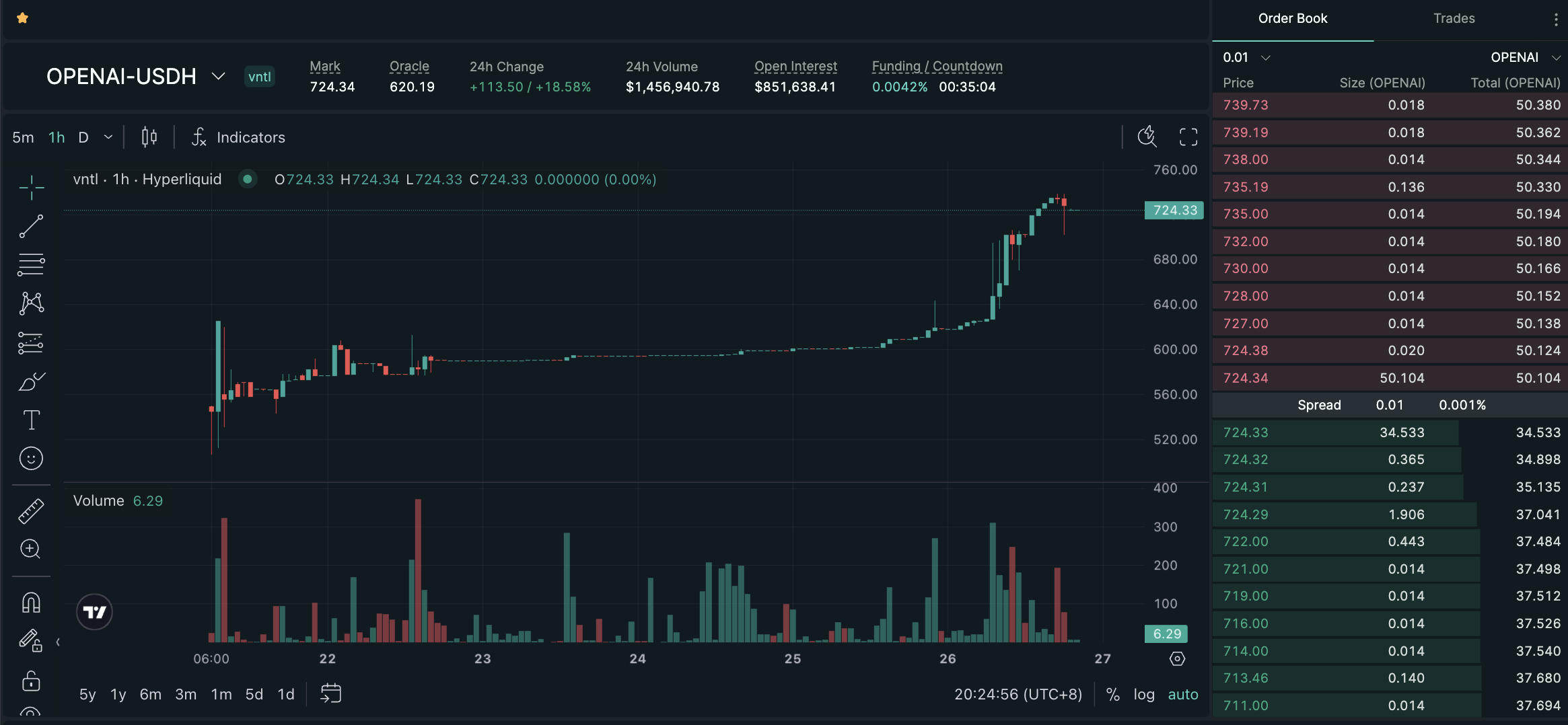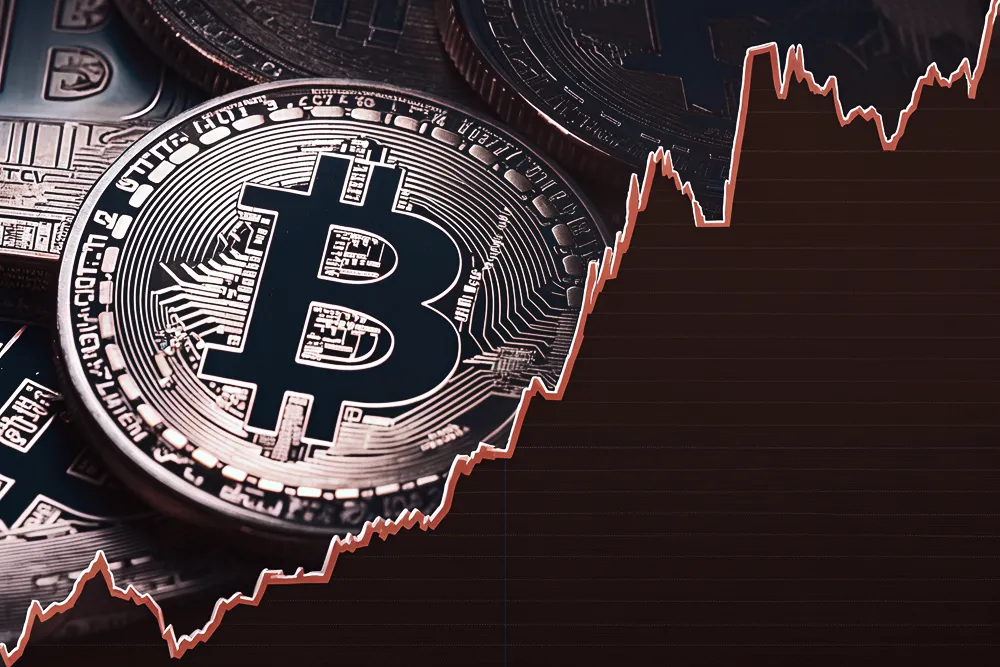Author: Bitget Wallet
1. Introduction
In the global asset landscape, private company equity—especially that of high-growth unicorn companies—represents an asset class that combines both quantitative value and imaginative potential. However, for a long time, this segment of value appreciation has been almost entirely monopolized by professional institutions such as private equity (PE) and venture capital (VC), with only a few institutions and high-net-worth investors able to participate. Ordinary investors often find themselves merely spectators of the growth stories of unicorns in the news.
Blockchain and tokenization are changing this situation. By issuing tokens on-chain to represent private company equity or its economic rights, the market hopes to build a new type of secondary market that can trade 24/7 within a compliant framework, enhancing liquidity, lowering barriers to entry, and connecting TradFi with DeFi on a larger scale.
Institutions have high expectations for this field; for instance, Citigroup believes that private equity tokenization could grow 80 times in the next decade, approaching a scale of $40 trillion. Against this narrative backdrop, the tokenization of private company equity naturally becomes one of the most关注的细分赛道 in RWA, with significance not only in technological innovation but also in the deep transformation of asset participation mechanisms, exit strategies, and revenue structures. Bitget Wallet Research will guide you through how equity tokenization will help private companies break through this barrier.
2. The Trillion-Dollar "Walled City": High Value, Yet Difficult to Enter and Exit
From the asset side, private company equity spans from startups to large private groups, with holders including founding teams, employee ESOP/RSU, angel investors, VC/PE funds, and some long-term institutions. From the funding side, according to public data, the global PE management scale is nearing $6 trillion, while VC management is about $3 trillion, totaling approximately $8.9 trillion. Meanwhile, by mid-2025, the total valuation of global unicorn companies is expected to hover between $4.8 trillion and $5.6 trillion, and this only accounts for a few thousand top companies at the pyramid's peak; tens of thousands of mature private companies that have yet to "reach unicorn status" have not been fully accounted for.
When these numbers are put together, a very striking picture emerges: a massive asset pool valued in trillions, yet a walled city with extremely poor liquidity. On one hand, this market is inaccessible to the vast majority. Major jurisdictions generally limit primary private placement opportunities to a small circle of qualified and institutional investors, with minimum investment amounts often starting from hundreds of thousands or even millions of dollars. The combined wealth and institutional barriers make it almost impossible for ordinary investors to engage with this asset class. On the other hand, those inside the city often find it hard to exit. For employees, angels, and VC/PE holders, the mainstream exit paths are almost limited to IPOs or mergers and acquisitions. Unicorn companies generally delay going public, with ten-year lock-up periods becoming the norm, making it difficult to realize paper wealth over the long term. Although there is an off-chain private equity secondary market, it heavily relies on intermediaries, with opaque processes, high costs, and long cycles, making it hard to become a scalable liquidity outlet.
The asymmetry between high-value assets and inefficient liquidity mechanisms provides a clear demand entry point for the tokenization of private company equity, which aims to reconstruct a new path for participation and exit without tearing apart regulatory and corporate governance orders.
3. What Tokenization Truly Changes
Under compliance, the value brought by tokenization goes beyond merely moving equity on-chain; it lies in the reshaping of three core mechanisms.
First is continuous secondary liquidity. Through tokenization, high-value equity can be divided into smaller shares, allowing more compliant investors to participate in targets that were previously exclusive to PE/VC. From the perspective of external investors, this is a starting point for ordinary people to buy a piece of OpenAI/SpaceX; from the perspective of internal holders, it provides employees, early shareholders, and some LPs with supplementary exit options beyond IPO/M&A, enabling phased monetization in a 24/7 on-chain market under controllable thresholds.
Second is more continuous price discovery and market capitalization management. Traditional valuations of private equity heavily rely on financing rounds, resulting in prices that are discrete and lagging, which can even be seen as intermittent quotes. If, within a compliant framework, part of the equity or economic rights is tokenized and enters continuous trading, the target company and primary investors can leverage more frequent market price signals to price subsequent financing, actively managing market capitalization in a "quasi-public market" and alleviating the valuation gap between primary and secondary markets.
Finally, there are new financing channels. For some high-growth companies, tokenization can serve not only as a tool for the circulation of existing equity but also as a means for issuing incremental funds. Through paths like Security Token Offerings (STO), companies may bypass expensive underwriting and lengthy IPO queuing processes to raise funds directly from global compliant investors. For those companies without short-term IPO plans but wishing to optimize capital structure and improve employee liquidity, this path holds practical appeal.
4. Three Models: True Equity on Chain, Synthetic Derivatives, and SPV Structures
Around the topic of private company equity tokenization, three main implementation paths have emerged in the market, each with essential differences in legal attributes, investor rights, and compliance pathways.
The first type is the native collaborative model of true equity on-chain. This model is actively authorized and participated in by the target company, with equity registration, token issuance, and shareholder registry maintenance completed within a regulatory framework. The on-chain token is legally recognized as equity, and holders possess complete shareholder rights, including voting and dividend rights. A typical representative is Securitize, which has helped companies like Exodus and Curzio Research tokenize equity and trade on ATS platforms, even further listing on the NYSE. The advantage lies in clear compliance and defined rights, but the prerequisite is high cooperation from the issuer, resulting in a relatively slow implementation pace.
The second type is synthetic mirror derivatives. These projects do not hold real equity but instead index the valuation of the target company through contracts/tickets and then issue perpetual contracts or debt-type tokens. Legally, investors form a creditor or contractual relationship with the platform and are not registered as shareholders of the target company; their returns depend entirely on contract settlement. Ventuals is one representative of this model, which, based on Hyperliquid's perpetual contract infrastructure, breaks down the valuations of non-public companies like OpenAI into tradable valuation units for users to go long or short.
The third type is the most common SPV indirect holding model in the current crypto scene. The issuing platform first establishes a Special Purpose Vehicle (SPV), which acquires a small amount of equity in the target company in the traditional private secondary market, and then tokenizes the beneficial rights of the SPV for external sale. Investors hold contractual economic beneficial rights to the SPV rather than direct rights on the target company's shareholder registry. The advantage of this model is its practical feasibility; even without cooperation from the issuer, it can still connect real equity with on-chain capital to some extent. However, it also naturally faces dual pressures from regulatory agencies and the legal departments of the target company, with transfer restriction clauses in shareholder agreements, the SPV's own opacity, and liquidation arrangements potentially becoming future points of contention.

5. Derivatives on the Table: When OpenAI is "On-Chain" with Perpetual Contracts
Recently, a new signal is reshaping the market's perception of Pre-IPO RWA: what many users want is not shareholder status but the ability to bet on the rise and fall of unicorns like OpenAI and SpaceX at any time.
Hyperliquid has amplified this demand to the extreme. Through the HIP-3 programmable perpetual contract layer, any team can create a new perp market as long as they stake enough HYPE; to reduce cold start pressure, Hyperliquid has also launched Growth Mode, offering about 90% fee reductions for new markets, allowing long-tail targets to quickly accumulate depth and activity in the early stages.
Just last week, Hyperliquid directly launched the OPENAI-USDH trading pair. This means that a company that is not yet publicly listed and whose valuation is entirely dominated by the private market has been pulled into a 24/7, leveraged, globally accessible on-chain market, forming a dimensional reduction impact on Pre-IPO RWA.

The expected impact is very clear: illiquid Pre-IPO equity tokens, before they can truly grow, are already marginalized by the depth and speed of the perp market. If this trend continues, the primary market may even have to reference the on-chain prices of the perp market for valuation discussions, fundamentally altering the price discovery logic of private assets.
Of course, questions arise: what exactly does the price of OPENAI-USDH anchor to? The market capitalization of private companies does not have continuous quotes off-chain, yet on-chain perpetual contracts operate 24/7, potentially relying on a "soft anchoring" system constructed by oracles, long-term valuation expectations, funding rates, and market sentiment.
For the Pre-IPO RWA track, there are two layers of real impact:
First is the squeeze on the demand side. When ordinary investors only want to bet on prices and do not care about shareholder rights, dividends, and voting rights, the perpetual contract DEX based on Hyperliquid is often simpler, more liquid, and offers richer leverage tools. In contrast, if Pre-IPO equity tokenization products merely provide price exposure, they will struggle to compete with perp DEX in terms of experience and efficiency.
Second is the comparison of narratives and regulatory logic. Equity tokenization must repeatedly negotiate with regulatory bodies like the SEC and the legal systems of issuers; meanwhile, perp DEX is currently more in a regulatory gray area, capturing mindshare and trading volume with lighter contract structures and global accessibility. For ordinary users, "first get on the perpetual contract, then consider whether there is real equity" is becoming a more natural path.
This does not mean that the narrative of Pre-IPO RWA is invalid, but it does sound the alarm: if this track is to go further, it must find its differentiated positioning between "real shareholder rights, long-term capital allocation, cash flow distribution" and "on-chain native liquidity."
6. Conclusion: The Rewriting of Asset Structure and Market Structure is Beginning
The importance of private company equity tokenization lies not in allowing more people to buy a piece of unicorns, but in addressing the fundamental pain points of private assets: high participation thresholds, narrow exit paths, and lagging price discovery. Tokenization has shown for the first time that these structural constraints may be redefined.
In this process, Pre-IPO RWA is both an opportunity and a pressure test. On one hand, it reveals real demand—employees, early shareholders, and investors are all seeking more flexible circulation methods; on the other hand, it exposes real constraints such as regulatory friction, price anchoring, and insufficient market depth. Especially under the dimensional reduction impact of perp DEX, the industry has gained a more direct view of the speed and power of on-chain native liquidity.
However, this does not mean that tokenization will come to a standstill. The transformation of asset structure, trading structure, and market structure often does not rely on a single model winning out but rather on issuers and infrastructure finding a sustainable compromise between regulation and efficiency. In the future, hybrid paths are more likely to emerge, retaining shareholder rights and governance structures within a compliant framework while also accommodating the continuous liquidity and global accessibility of on-chain markets.
As more assets are brought on-chain in a composable and tradable form, the boundaries of private equity will be redefined: it will no longer be a scarce asset in a closed market but a fluid node within the global capital network.
免责声明:本文章仅代表作者个人观点,不代表本平台的立场和观点。本文章仅供信息分享,不构成对任何人的任何投资建议。用户与作者之间的任何争议,与本平台无关。如网页中刊载的文章或图片涉及侵权,请提供相关的权利证明和身份证明发送邮件到support@aicoin.com,本平台相关工作人员将会进行核查。



